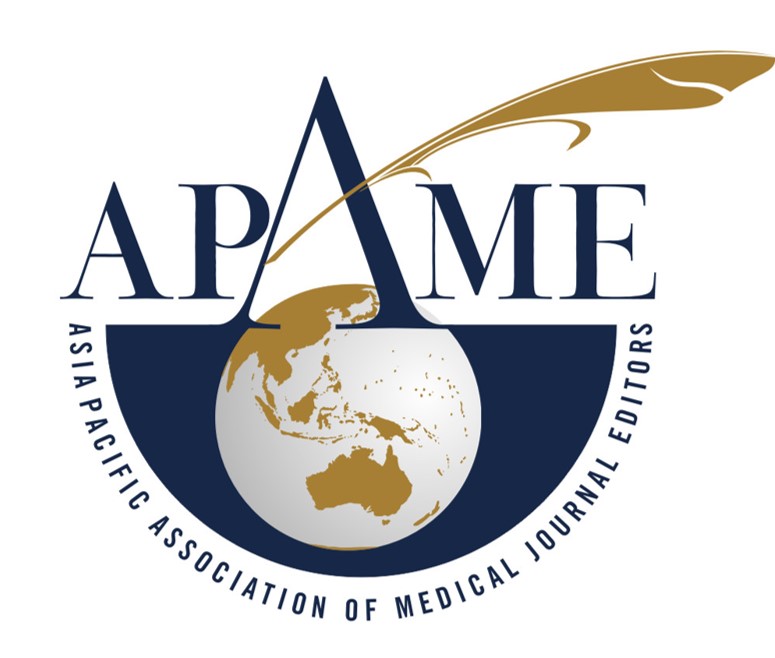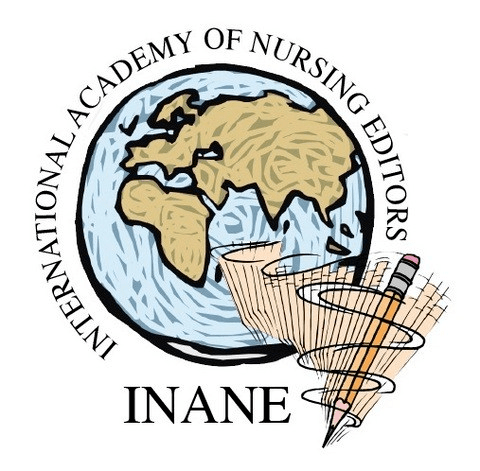“Journey of Uncertainties:” Nature of Transitioning among Persons Living with Undetectable HIV
Abstract
Introduction: The management of persons living with HIV gears towards making that person “seronegative,” undetectable in screening and practically with almost no risk of transmitting the disease. Although the trajectory of this management is clear, the process by which the person living with HIV transition from being seropositive to seronegative remains to be explored. There remains to be a paucity of research on the nature of transitioning among seronegative persons living with HIV especially from the lens of an Asian nation.
Methodology: This study explored the nature of transitioning among nine (9) seronegative persons living with HIV. Grounded on the Rogerian Science of Unitary Human Being as its philosophical underpinning and Gadamerian interpretative phenomenology as its approach, nine (9) informants were selected with the following criteria: They are 1) Persons living with HIV for at least 2 years; 2) Seronegative for at least a year during the time of the interview, and 3) Willing to articulate and share their experiences. After obtaining approval from the University Research Ethics Board, multiple in-depth interviews, story-telling sessions, and photo-elicitation were utilized to gather the informants' narratives.
Findings: After a series of reflective analyses, the following nature of transitioning was identified: (1) transitioning as a conscious deliberate choice, (2) transitioning as an unpredictable struggle of being, and (3) transitioning as seeking a personal sense of normalcy. These transition patterns reflect the moment to moment deliberate choice of existence by the informants. The transition moments are appreciated thru the lens of unpredictability and internal struggles as they try to create a sense of normalcy amidst their transitioning situations.
Implications: Insights from this study suggest that though the process of transitioning among informants seems varied, the core patterns of deliberateness, unpredictability, and sense of normalcy cut across their stories. Persistent support from peers and family sustained counseling from diagnosis to being seronegative and health teaching focusing on risky behavior while transitioning are implied techniques to provide support during their transitioning process. The sense of immediacy and genuine presence from health care providers caring for these persons seems to be appreciated as a supportive mechanism of their transitioning journey.
Downloads
References
Avert. (2019, January). HIV and AIDS in Asia & the Pacific regional overview. https://www.avert.org/professionals/hiv-around-world/asia-pacific/overview
Barroso, J., &Powell-Cope, G. M. (2000). Metasynthesis of Qualitative Research on Living with HIV Infection. Qualitative Health Research, 10(3), 340–353. https://doi.org/10.1177/104973200129118480
Baumann, S. L., Wright, S. G., & Settecase-Wu, C. (2014). A Science of Unitary Human Beings Perspective of Global Health Nursing. Nursing Science Quarterly, 27(4), 324–328. https://doi.org/10.1177/0894318414546412
Boyce, C., & Neale, P. (2006). A guide for designing and conducting in-depth interviews for evaluation input.Pathfinder International Todd Series:
Centers for Disease Control and Prevention. (2020, January). HIV treatment. https://bit.ly/3nsgGzb
Department of Health –Epidemiology Bureau. (2020, January). HIV/AIDS & ART Registry of the Philippines. Manila, Philippines
Earnshaw, V. A., Lang, S. M., Lippitt, M., Jin, H., & Chaudoir, S. R. (2014). HIV Stigma and Physical Health Symptoms: Do Social Support, Adaptive Coping, and/or Identity Centrality Act as Resilience Resources?AIDS and Behavior, 19(1), 41–49. https://doi.org/10.1007/s10461-014-0758-3
Eisinger, R. W., Dieffenbach, C. W., & Fauci, A. S. (2019). HIV viral load and transmissibility of HIV infection: undetectable equals untransmittable. JAMA, 321(5), 451-452. https://doi.org/10.1001/jama.2018.21167
Gangcuangco, L.M. (2019). HIV crisis in the Philippines: Urgent actions need. The Lancet Public Health, 4(2), 84. https://doi.org/10.1016/s2468-2667(18)30265-2
Holroyd, A. E. M. (2007). Interpretive hermeneutic phenomenology: Clarifying understanding. Indo-Pacific Journal of Phenomenology, 7(2). https://doi.org/10.1080/20797222.2007.11433946
Martinez, R. (2013). “Masked”: The lives of adolescents undergoing chemotherapy. Philippine Journal of Nursing, 83(2), 9-18.
Phillips, J. R. (2016). Rogers’ science of unitary human beings: Beyond the frontier of science.Nursing Science Quarterly,29(1), 38-46. https://doi.org/10.1177/0894318415615112
Restar, A., Nguyen, M., Nguyen, K., Adia, A., Nazareno, J., Yoshioka, E., Hernandez, L., & Operario, D. (2018). Trends and emerging directions in HIV risk and prevention research in the Philippines: A systematic review of the literature. PLOS ONE, 13(12). https://doi.org/10.1371/journal.pone.0207663
Robinson, N. (1998). People with HIV/AIDS: who cares? Journal of Advanced Nursing, 28(4), 771–778. https://doi.org/10.1046/j.1365-2648.1998.00720.x
Rogers, M. E. (1992). Nursing science and the space age. Nursing science quarterly, 5(1), 27-34.
Rose, L., Pugh, L. C., Lears, K., & Gordon, D. L. (1998). The fatigue experience: persons with HIV infection. Journal of Advanced Nursing, 28(2), 295–304. https://doi.org/10.1046/j.1365-2648.1998.00789.x
Rosenthal, G. (2003). The Healing Effects of Storytelling: On the Conditions of Curative Storytelling in the Context of Research and Counseling. Qualitative Inquiry,9(6), 915–933. https://doi.org/10.1177/1077800403254888
Salad, A. M., Mohamed, A., Da’ar, O. B., Abdikarim, A., Kour, P., Shrestha, M., & Gele, A. A. (2019). Sick and solo: a qualitative study on the life experiences of people living with HIV in Somalia.HIV/AIDS -Research and Palliative Care. 11, 45–53. https://doi.org/10.2147/hiv.s185040
Sammel, A. (2003). An Invitation to Dialogue: Gadamer, Hermeneutic Phenomenology, and Critical Environmental Education. Canadian Journal of Environmental Education, 8(1), 155-168. https://files.eric.ed.gov/fulltext/EJ881755.pdf
Sidat, M., Fairley, C., & Grierson, J. (2007). Experiences and Perceptions of Patients with 100% Adherence to Highly Active Antiretroviral Therapy: A Qualitative Study. AIDS Patient Care and STDs, 21(7), 509–520. https://doi.org/10.1089/apc.2006.0201
Siegel, K., Meunier, É., & Lekas, H. M. (2018). The experience and management of HIV stigma among HIV-negative adults in heterosexual serodiscordant relationships in New York City. AIDS care, 30(7), 871-878. https://doi.org/10.1080/09540121.2018.1441971
Sutton-Brown, C. A. (2014). Photovoice: A Methodological Guide. Photography and Culture, 7(2), 169–185. https://doi.org/10.2752/175145214x1399992210316
U.S. Department of Health and Human Services. (2019, January). Serostatus. https://aidsinfo.nih.gov/understanding-hiv-aids/glossary/1632/serostatus
UNAIDS. (2019). UNAIDS data 2019. https://www.unaids.org/sites/default/files/media_asset/2019-UNAIDS-data_en.pdf
Verdery, A. M., Siripong, N., &Pence, B. W. (2017). Social Network Clustering and the Spread of HIV/AIDS Among Persons Who Inject Drugs in 2 Cities in the Philippines. JAIDS Journal of Acquired Immune Deficiency Syndromes, 76(1), 26–32. https://doi.org/10.1097/qai.0000000000001485
Wright, B. W. (2007). The Evolution of Rogers’ Science of Unitary Human Beings: 21st Century Reflections. Nursing Science Quarterly, 20(1), 64–67. https://doi.org/10.1177/0894318406296295
Yoshioka, M. R., & Schustack, A. (2001). Disclosure of HIV Status: Cultural Issues of Asian Patients. AIDS Patient Care and STDs, 15(2), 77–82. https://doi.org/10.1089/108729101300003672
Copyright (c) 2020 Journal of Health and Caring Sciences

This work is licensed under a Creative Commons Attribution-NonCommercial 4.0 International License.


.png)





